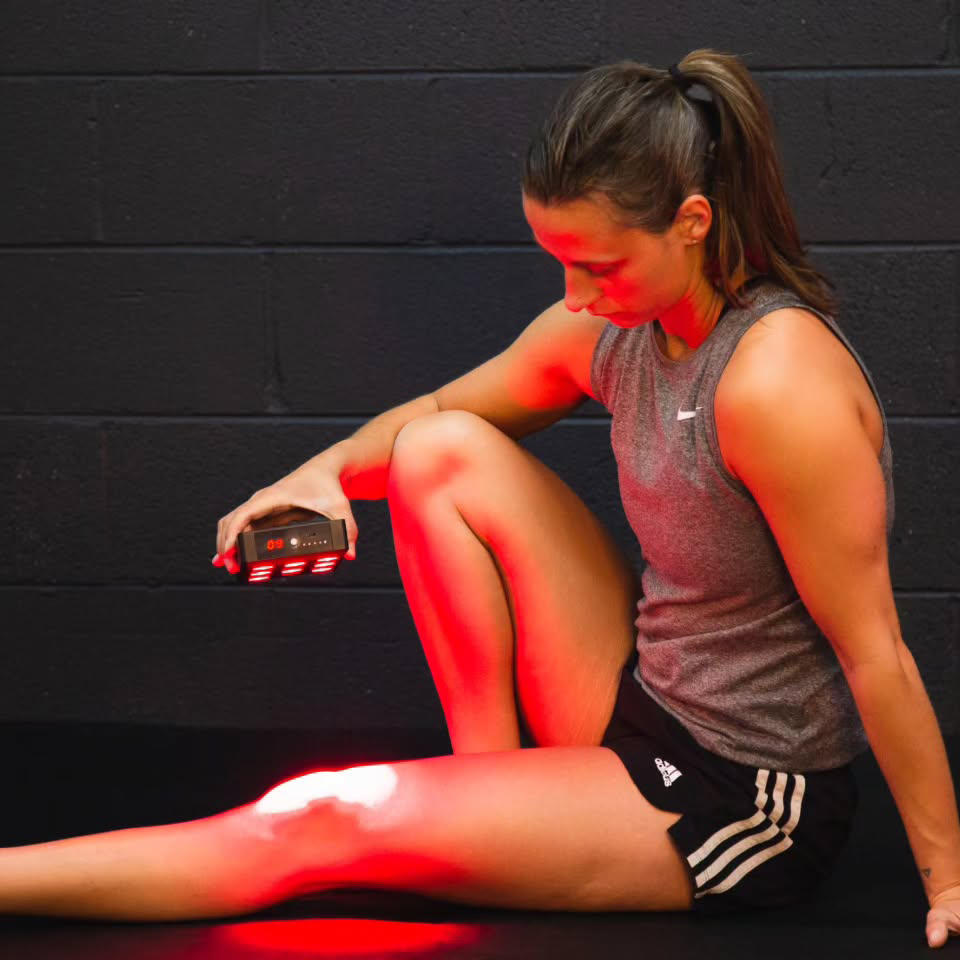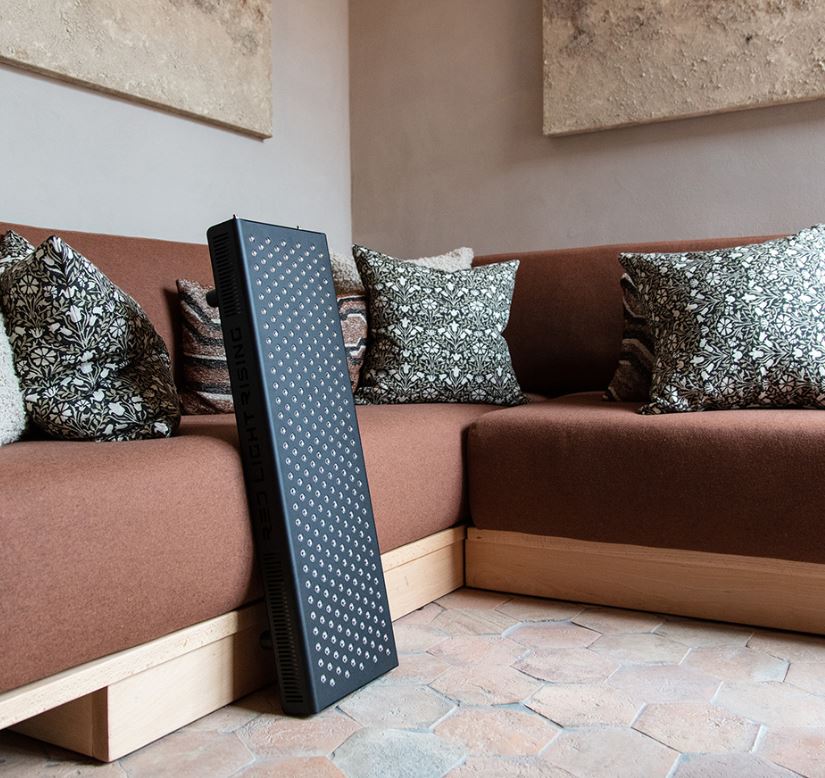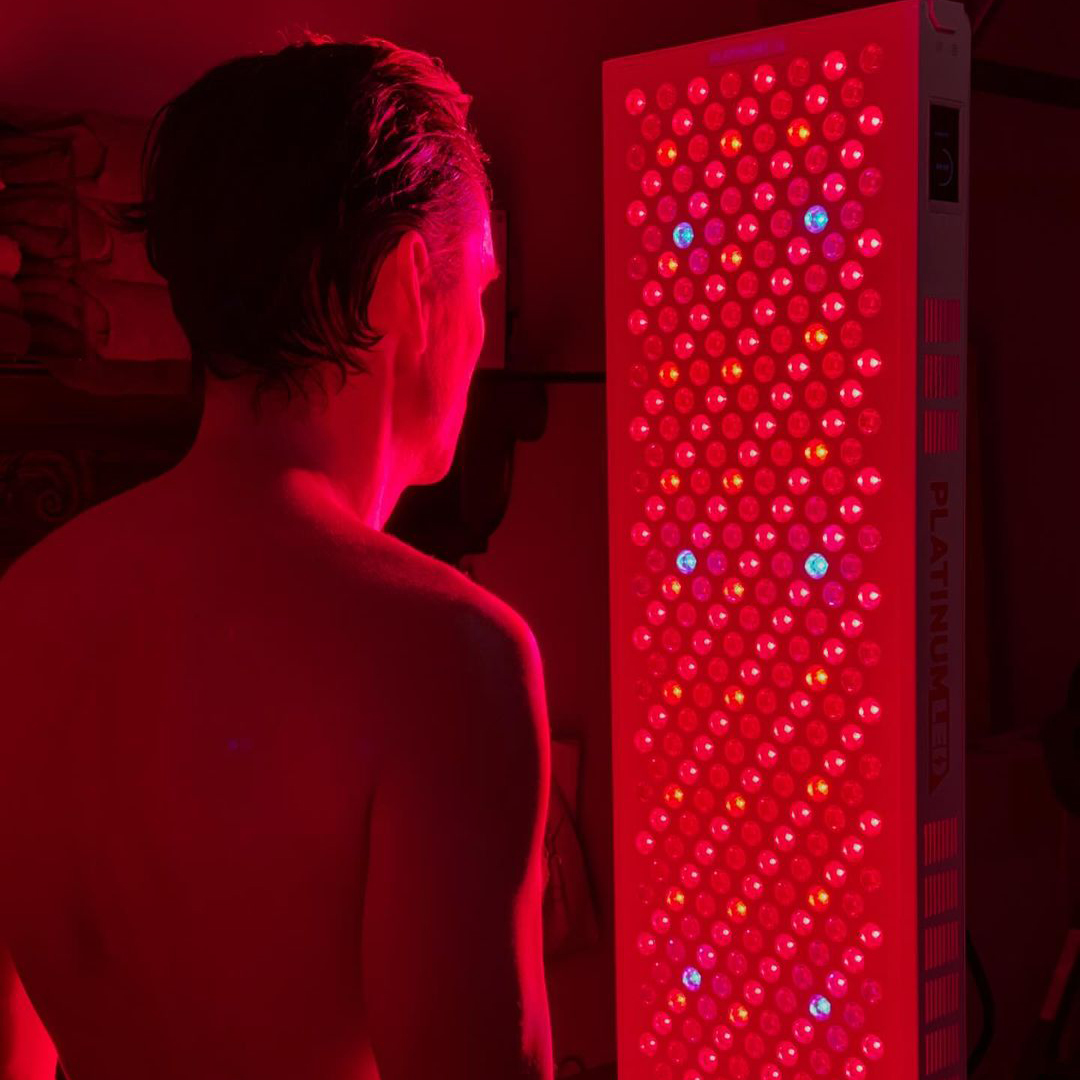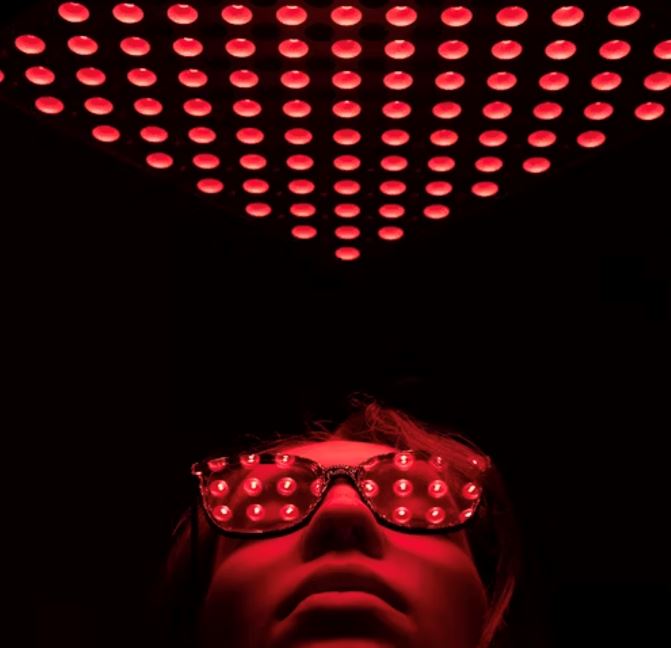![]() Free Shipping
Free Shipping ![]() Buy Now, Pay Later
Buy Now, Pay Later ![]() Eligible
Eligible
Red Light Therapy for Ankylosing Spondylitis: Reducing Inflammation and Improving Mobility
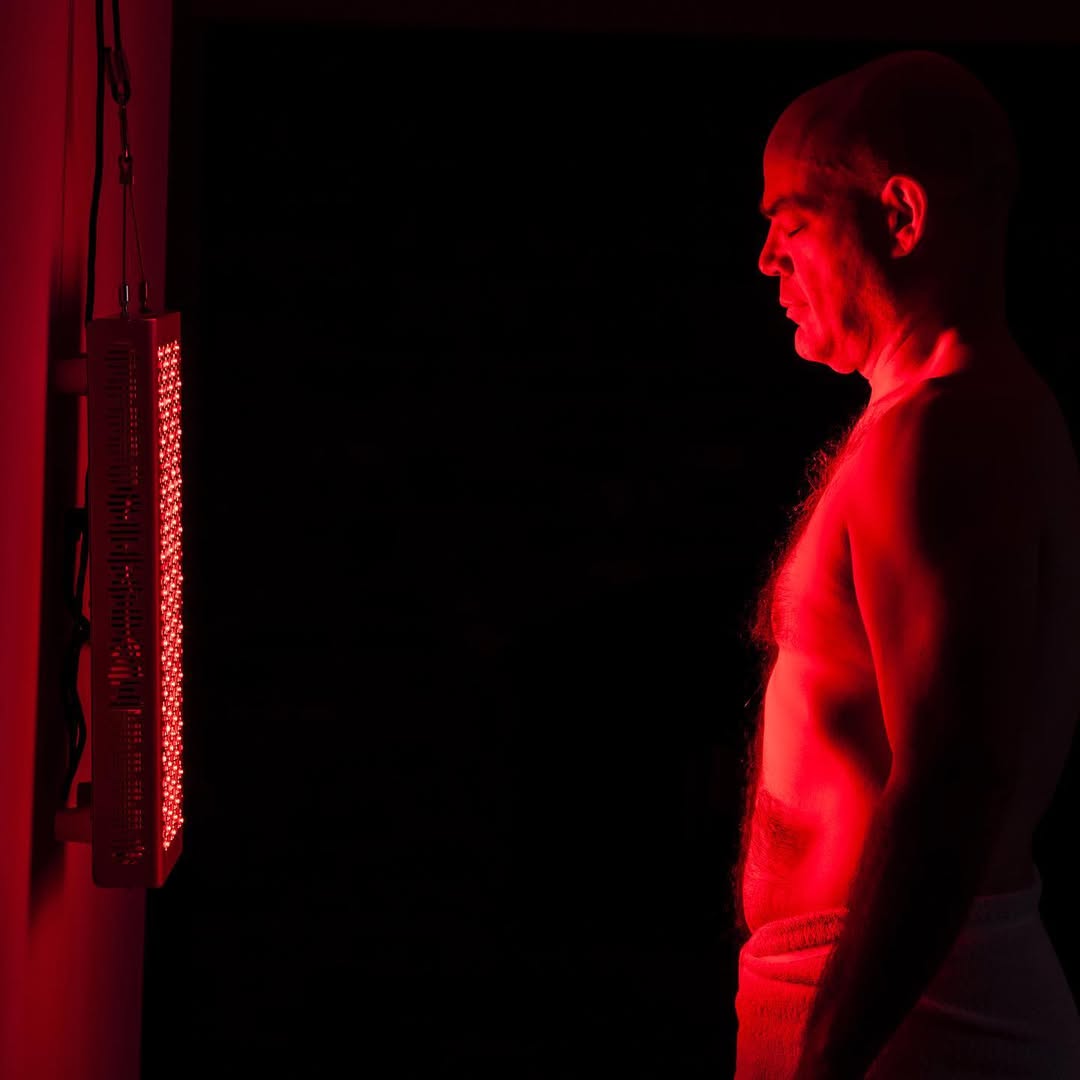
Ankylosing Spondylitis (AS) is a chronic inflammatory disease that primarily affects the spine, leading to pain, stiffness, and reduced mobility. Over time, inflammation can cause the vertebrae to fuse, resulting in a rigid spine and significant discomfort. Traditional treatments include NSAIDs, biologics, and physical therapy, but many patients seek alternative therapies to manage symptoms.
One promising option is Red Light Therapy (RLT), also known as low-level laser therapy (LLLT) or photobiomodulation. This non-invasive treatment uses specific wavelengths of red and near-infrared light to penetrate deep into tissues, reducing inflammation, easing pain, and promoting healing.
In this comprehensive guide, we’ll explore:
- The science behind red light therapy
- How it can help with Ankylosing Spondylitis
- Clinical evidence supporting its use
- Practical ways to incorporate RLT into your treatment plan
- Tips for choosing the right device
By the end, you’ll have a clear understanding of whether red light therapy could be a valuable addition to your AS management strategy.
Understanding Ankylosing Spondylitis
Before diving into red light therapy, let’s briefly recap what AS entails.
What is Ankylosing Spondylitis?
Ankylosing Spondylitis is a type of autoimmune arthritis that primarily targets the sacroiliac joints (where the spine meets the pelvis) and the spine itself. Over time, chronic inflammation can lead to:
- Bone fusion (ankylosis) – Vertebrae may grow together, reducing flexibility.
- Chronic pain and stiffness – Especially in the lower back and hips.
- Reduced mobility – Difficulty bending, twisting, or standing upright.
- Systemic effects – Some patients experience fatigue, eye inflammation (uveitis), and even heart or lung complications.
Current Treatment Options
- Medications – NSAIDs (e.g., ibuprofen), DMARDs (e.g., sulfasalazine), and biologics (e.g., TNF inhibitors like Humira).
- Physical Therapy – Exercises to maintain flexibility and posture.
- Lifestyle Changes – Regular movement, stretching, and ergonomic adjustments.
- Surgery – In severe cases, joint replacements or spinal corrections may be needed.
While these treatments help, they don’t work for everyone, and some come with side effects. This is where red light therapy offers a drug-free, non-invasive alternative to reduce inflammation and improve mobility.
What is Red Light Therapy?
Red Light Therapy (RLT) involves exposing the body to low-wavelength red and near-infrared (NIR) light. Unlike UV rays, these wavelengths are safe and penetrate deep into tissues without causing damage.
How Does It Work?
The key mechanism is photobiomodulation—light energy is absorbed by cells, triggering biological processes that:
- Boost mitochondrial function – Enhances ATP (energy) production, aiding tissue repair.
- Reduce inflammation – Lowers pro-inflammatory cytokines (e.g., TNF-α, IL-6).
- Increase blood circulation – Promotes oxygen and nutrient delivery to damaged areas.
- Stimulate collagen production – Helps repair connective tissues.
Wavelengths Matter
- Red light (630-700 nm) – Works on superficial layers (skin, muscles).
- Near-infrared (700-1100 nm) – Penetrates deeper (joints, bones).
For AS, NIR is particularly beneficial because it reaches spinal and sacroiliac joints.
VELLGUS Elite V2
THE #1 RATED RED LIGHT DEVICE
VELLGUS pro V2
THE #1 RATED FULL BODY RED LIGHT DEVICE
Red Light Therapy for Ankylosing Spondylitis: The Benefits
1. Reduces Inflammation
Chronic inflammation is the root cause of AS pain and stiffness. Studies show RLT:
- Decreases inflammatory markers (TNF-α, IL-6).
- Modulates immune response – Helps prevent excessive immune attacks on joints.
A 2014 study in the Lasers in Medical Science journal found that LLLT significantly reduced inflammation in arthritis patients, improving pain and mobility.
2. Relieves Pain and Stiffness
RLT stimulates endorphin release (natural painkillers) and blocks pain signals. Patients report:
- Less morning stiffness
- Reduced spinal and hip pain
- Improved range of motion
3. Prevents Joint Fusion
By reducing inflammation and promoting tissue repair, RLT may slow down bone overgrowth (ankylosis).
4. Enhances Mobility and Posture
With less pain and stiffness, patients find it easier to:
- Perform daily activities
- Engage in physical therapy exercises
- Maintain better posture
5. No Side Effects (Unlike Medications)
Unlike NSAIDs (which can cause stomach issues) or biologics (which suppress immunity), RLT is non-toxic and safe for long-term use.
Scientific Evidence Supporting RLT for AS
While more AS-specific studies are needed, research on inflammatory arthritis and back pain supports RLT’s effectiveness:
- A 2009 study in The Clinical Journal of Pain found that LLLT reduced pain and disability in chronic low back pain patients.
- A 2017 meta-analysis in Pain Research and Management concluded that red light therapy significantly reduces inflammation and pain in musculoskeletal disorders.
- A 2020 study in Rheumatology International showed that photobiomodulation improved spinal mobility in AS patients when combined with exercise.
These findings suggest that RLT could be a powerful adjunct therapy for AS.
How to Use Red Light Therapy for AS
1. Professional vs. At-Home Devices
- Clinical-grade RLT – Offered in pain clinics, chiropractic offices, or physical therapy centers (higher power, deeper penetration).
- At-home devices – LED panels, handheld devices, or wearable wraps (convenient for daily use).
2. Treatment Protocol
- Frequency: 3-5 sessions per week (consistency is key).
- Duration: 10-20 minutes per session.
- Target Areas: Lower back, hips, neck (where stiffness is worst).
3. Combining RLT with Other Therapies
For best results, pair RLT with:
- Stretching (yoga, Pilates)
- Strength training (to support joints)
- Anti-inflammatory diet (omega-3s, turmeric, leafy greens)
Choosing the Right Red Light Therapy Device
Not all devices are equal. Look for:
✔ Wavelengths: 660 nm (red) + 850 nm (NIR) for deep penetration.
✔ Power Output: At least 50-100 mW/cm² for effectiveness.
✔ FDA-Cleared: Ensures safety and efficacy.
Top Recommended Brands:
- Joovv (medical-grade panels)
- Mito Red Light (affordable, high-quality)
- FlexBeam (wearable for targeted treatment)
Real-Life Success Stories
Many AS patients have experienced relief with RLT:
- Mark, 42: “After 3 months of daily red light therapy, my morning stiffness decreased by 70%. I can finally bend without pain.”
- Sarah, 35: “Combining RLT with yoga has kept my spine flexible. I’ve avoided biologics so far.”
Potential Limitations and Considerations
- Not a cure – Works best as part of a holistic approach.
- Cost – High-quality devices can be expensive (but cheaper than lifelong meds).
- Patience required – Results may take weeks to months.
Final Verdict: Is Red Light Therapy Worth Trying for AS?
Yes! If you’re looking for a natural, side-effect-free way to manage AS symptoms, red light therapy is a compelling option. It won’t replace all treatments but can significantly improve pain, mobility, and quality of life.
Next Steps:
- Consult your rheumatologist – Ensure RLT fits your treatment plan.
- Try a professional session – See how your body responds.
- Invest in an at-home device – For consistent, long-term benefits.
Conclusion
Ankylosing Spondylitis is a challenging condition, but red light therapy offers hope for reducing inflammation, easing pain, and preserving mobility. Backed by science and real-world success stories, RLT is a safe, effective, and drug-free option worth exploring.
Have you tried red light therapy for AS? Share your experience in the comments!
Disclaimer: This article is for informational purposes only and is not medical advice. Always consult a healthcare provider before starting new treatments.





